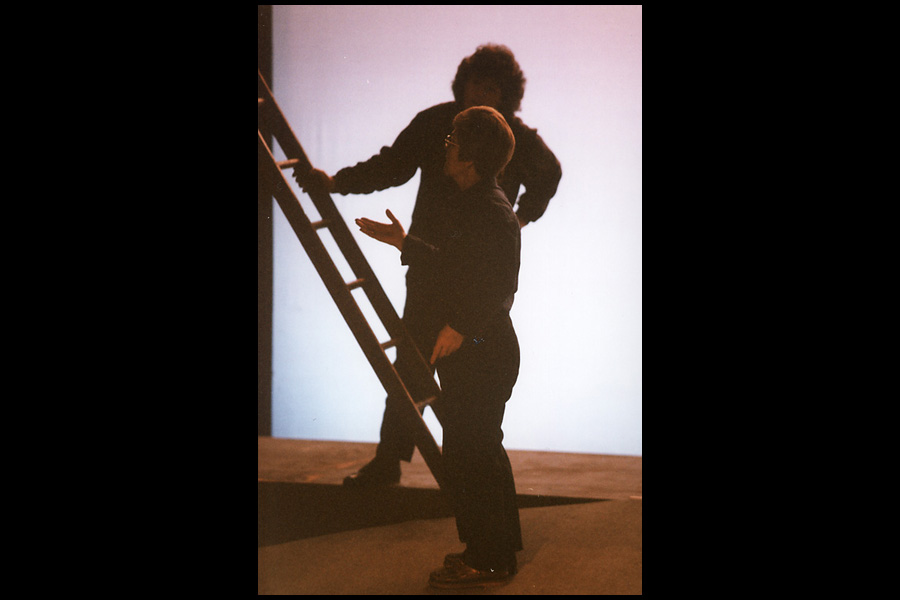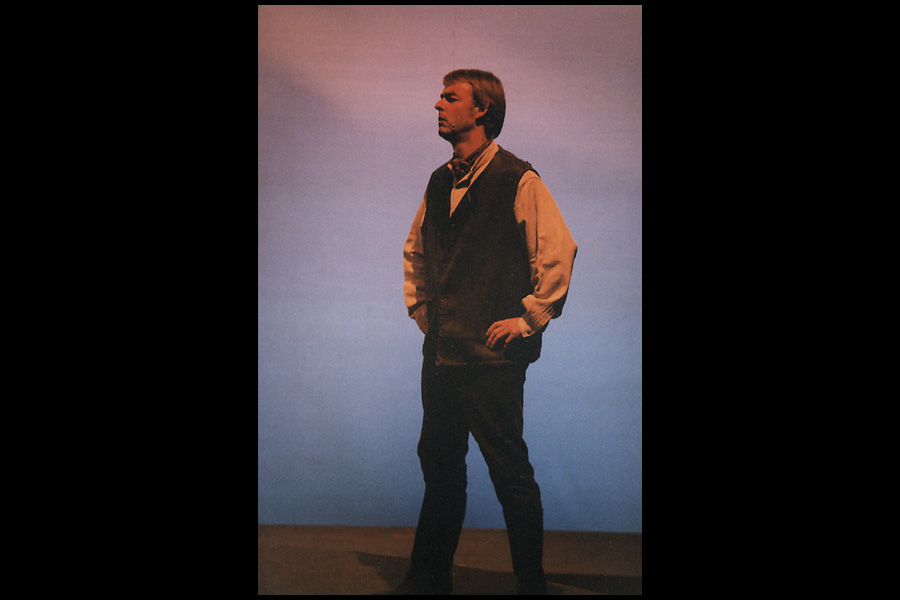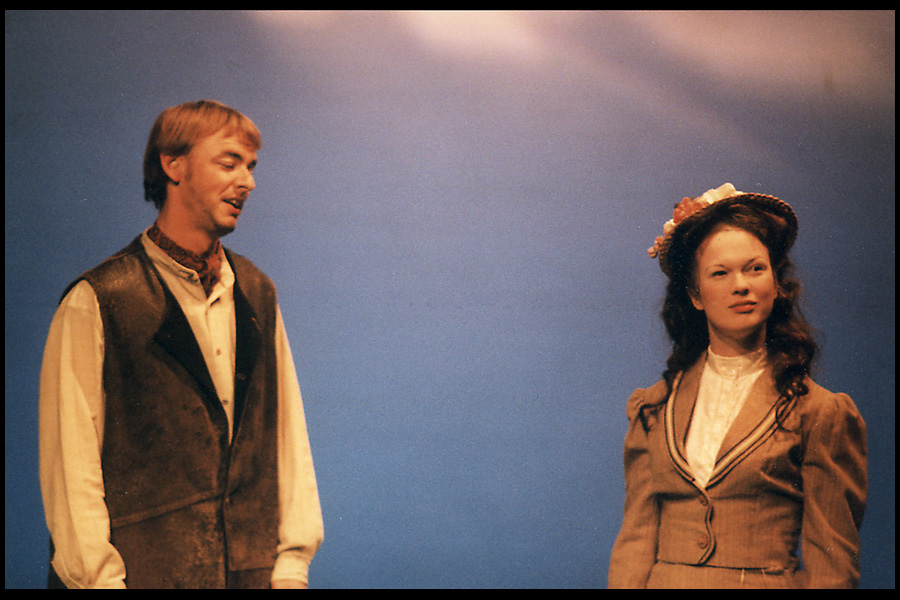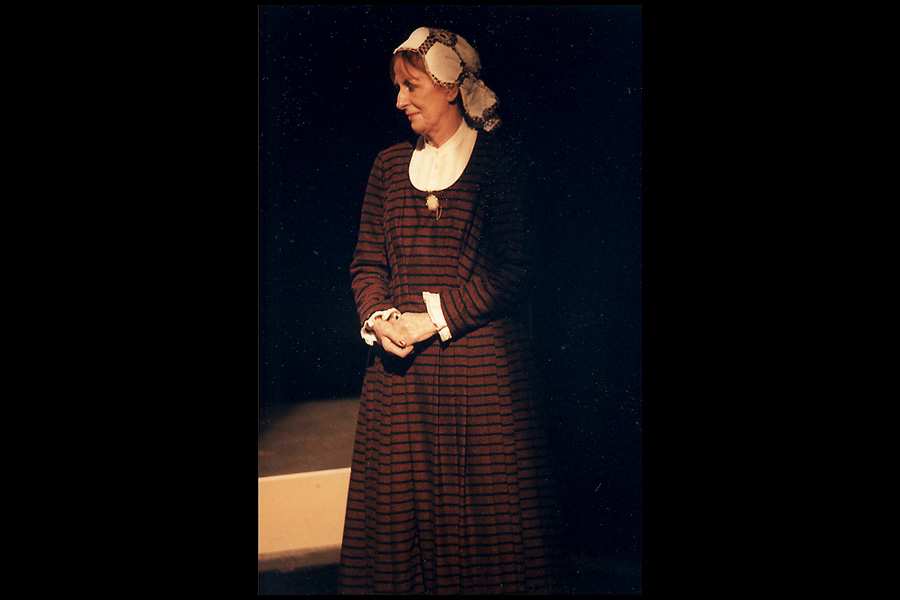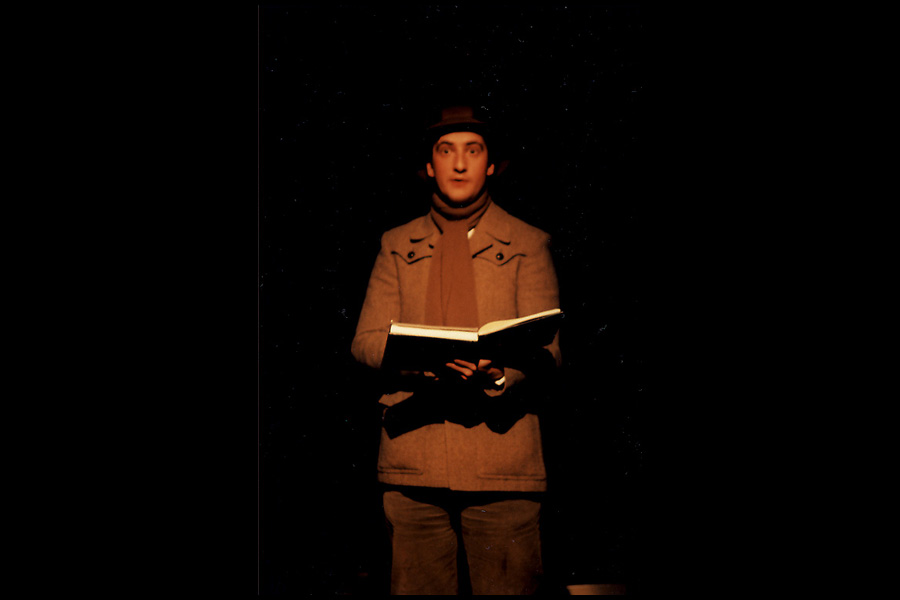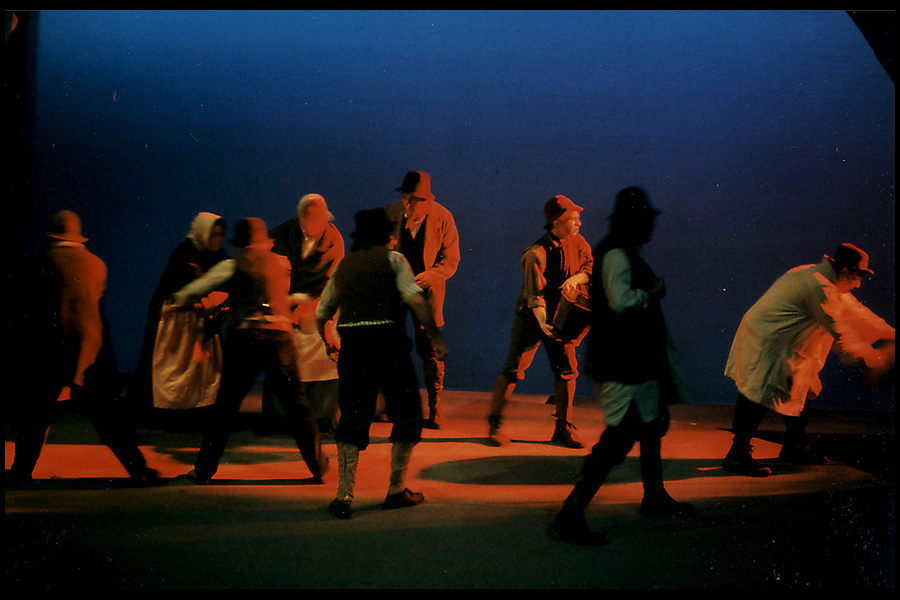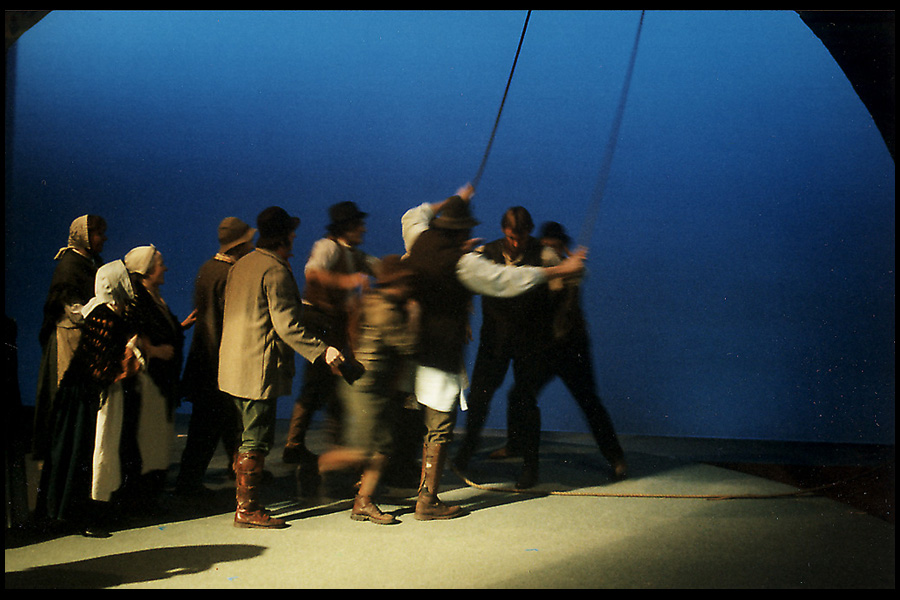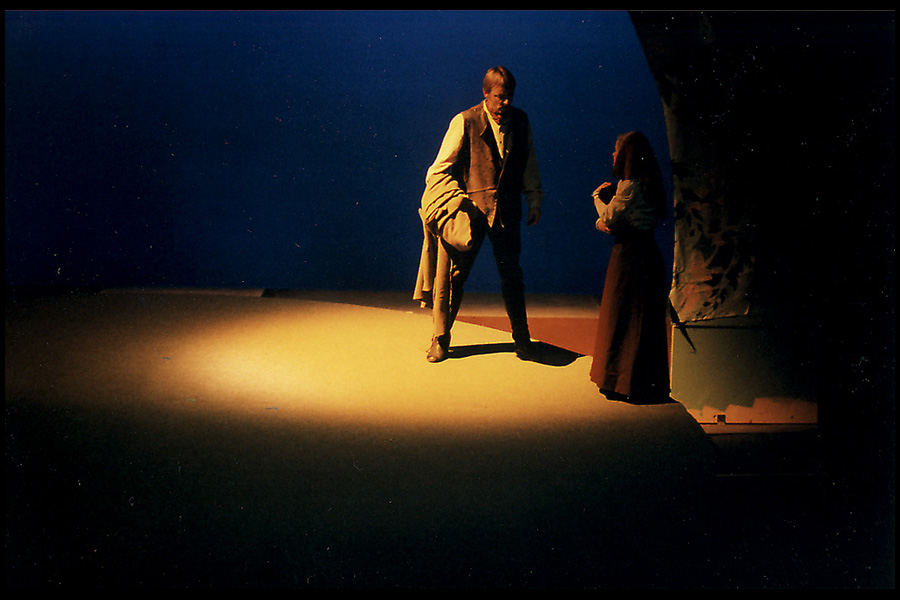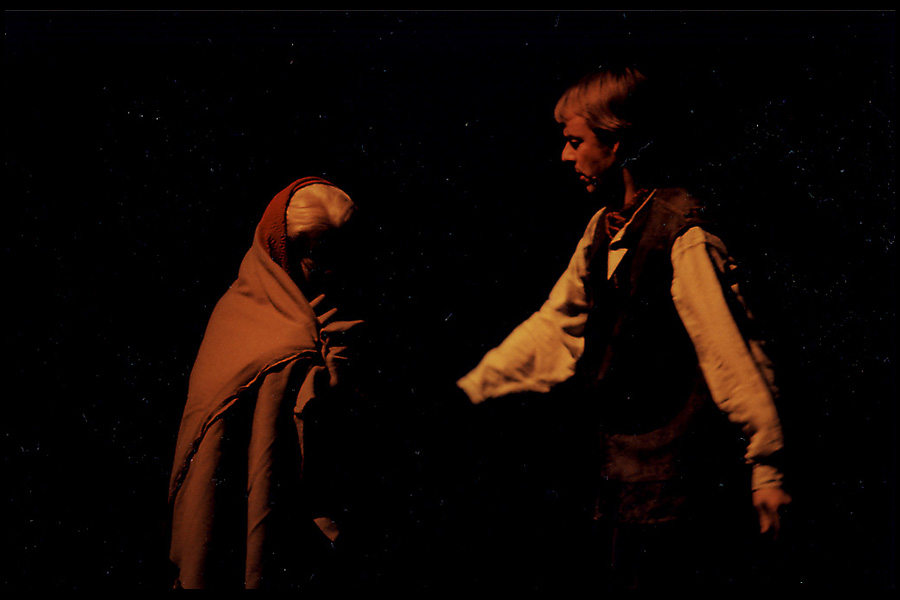Nuffield Theatre
on20th to 24th January 1998

Thomas Hardy was born in Higher Bockhampton near Dorchester in 1840. At the age of 16 he became articled to a local architect before moving to London. Hardy returned to Dorchester in 1867 to continue his architectural work, and became married to Emma Gifford in 1874 - the year in which Far From the Madding Crowd was published.
His first published novel, Desperate Remedies, appeared in 1871 but it was the success of Far From the Madding Crowd which enabled him to abandon his career as an architect and concentrate on writing.
Hardy was to become one of the greatest English novelists and poets of the nineteenth century. Although Hardy’s marriage to Emma Gifford was not a particularly happy one, following her death in 1912 he produced some of his most moving and memorable poems.
His evocations of the Wessex landscape, and particularly Dorset, are unsurpassed. But it is not simply a landscape which is picturesque or sentimentalised, but a real world within which his characters live, and often struggle to survive. One of the underlying themes in Hardy’s work is man’s struggle against an indifferent force which rules the world, reflecting on the sufferings and ironies of life and love.
Hardy explored what he described as ‘an ample theme: the intense interests, passions, and strategy that throb through the commonest lives.’
He died in Dorchester in 1928. His ashes are buried in Poet’s Corner, Westminster Abbey, but his heart is in Emma’s grave in Stinsford churchyard in Dorset.
Far from the madding crowd’s ignoble strife,
Their sober wishes never learn’d to stray;
Along the cool sequester’d vale of life
They kept the noiseless tenor of their way.’
[from Gray’s Elegy]
Far From the Madding Crowd, published in 1874, is one of Hardy’s most successful and popular novels. He was asked to write a novel for serialisation in the Cornhill Magazine by Leslie Stephen, the editor (and father of Virginia Woolf). When Hardy submitted the manuscript Stephen requested that he modify some of the scenes which he felt might shock its Victorian readers. The first episode appeared anonymously, and was generally well received by readers and critics alike.
Far From the Madding Crowd is a pastoral tale set in the Dorset landscape which Hardy knew so well and he drew on his local knowledge and feeling for rural dialect and custom. Hardy’s sense of the humorous and absurd is reflected in his portrayal of the rustic characters in the novel. The characters of Bathsheba and Sergeant Troy were based on Hardy’s aunt, Martha Hand, and her husband John Sharpe.
The novel has been described as Hardy’s great novel about marriage, despite his own sense of disillusionment in the institution later in life. But as with much of Hardy’s work the novel is also about change, and the conflict between the old and the new. Into the rural community of Wetherby come Bathsheba and Troy, both disrupting the sense of harmony and permanence symbolised by Gabriel Oak and Boldwood. Hardy also illustrates, in his portrayal of Bathsheba, his understanding of the complexities of the female character which is a central theme in Hardy’s work and which was to be developed further in his later novels, particularly Jude the Obscure. Despite the tragic events in the novel, Far From the Madding Crowd has a sense of optimism which his later, and darker, novels do not possess.
| Cast | |
| Gabriel Oak | Steve Clark |
| Bathsheba Everdene | Sarah Humphrey |
| Mrs. Hurst | Mollie Manns |
| Joseph Poorgrass | Graham Buchanan |
| Jan Coggan | Alan Watson |
| Liddy Smallbury | Hazel Burrows |
| Henry Fray | David Cradduck |
| Cainy Ball | Paul Taylor |
| Maryann Money | Brenda Atkinson |
| Fanny Robin | Sarah O’Leary |
| The Maltster | Albie Minns |
| Jacob Smallbury | David Pike |
| Billy Smallbury | Bruce Atkinson |
| Laban Tall | Paul Baker |
| William Boldwood | Brian Stansbridge |
| Mrs Coggan | Christine Baker |
| Mrs Tall | Belinda Drew |
| Andrew Randle | Alec Walters |
| Temperance Miller | Shirley Wallis |
| Soberness Miller | Jennifer East |
| Francis Troy | John Carrington Jnr |
| Reverend Halliwell | Derek Leslie |
| For the Maskers | |
| Production, direction and adaptation | Ken Spencer |
| Adaptation assisted by | Sandy White |
| Stage Manager | Val Barwell |
| Set Design | Ken Spencer |
| Set Construction | Bryan Langford, Douglas Shiell, Geoff Cook |
| Lighting Design | Ron Tillyer |
| Sound | Lawrie Gee |
| Properties | Ella Lockett, Irene Shiell |
| Wardrobe | Sheana Carrington, Gill Buchanan, ChristineBaker |
| Marketing and Publicity | Harry Tuffill, Pam Cook , Jan Gee, Geoff Wharam |
| Programme Production | Sandy White |
| Music | Mike Bailey of ‘The Madding Crowd’ |
click on a photo to enlarge it
